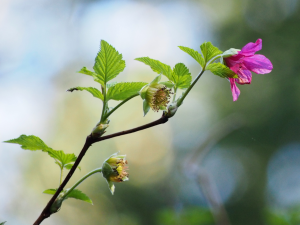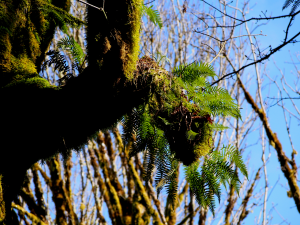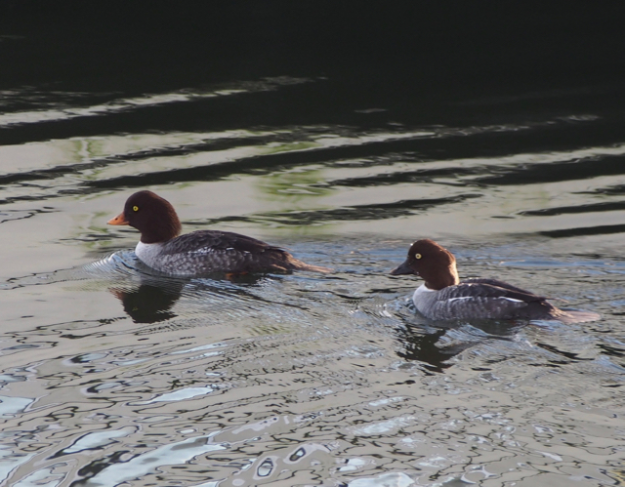 On May 17, 2017, Jeanmarie Morell led a hike for the Natural History Society, at Anderson Lake State Park.
On May 17, 2017, Jeanmarie Morell led a hike for the Natural History Society, at Anderson Lake State Park.
It was an easy three-mile ramble around the lake. We checked out the flora and ethnobotanical uses of plants, by examining cedar trees for signs of bark harvest (from before the land was a park); noting the formation of tiny fruits on edible berry shrubs; discussing how we use local native plants; tasting licorice fern; and much more.
 Participation was not limited, and carpools were arranged. We suggested wearing light hiking boots and dressing in layers for changing weather, and bringing field guides, binoculars, and plenty of food and water.
Participation was not limited, and carpools were arranged. We suggested wearing light hiking boots and dressing in layers for changing weather, and bringing field guides, binoculars, and plenty of food and water.
Eileen at JLTnatural@saveland.org was the contact for carpool and other information.
 On April 15, 2017, Jefferson Land Trust Land Steward Marcia Schwendiman joined our Natural History Society for a springtime walk along the beach and into the woods on Bywater Bay.
On April 15, 2017, Jefferson Land Trust Land Steward Marcia Schwendiman joined our Natural History Society for a springtime walk along the beach and into the woods on Bywater Bay. We suggested wearing light hiking boots and layers, and bringing water, snack/lunch, binoculars, and field guides. There was no limit to the size of the group.
We suggested wearing light hiking boots and layers, and bringing water, snack/lunch, binoculars, and field guides. There was no limit to the size of the group. On March 8, 2017, JLT Land Stewards Michele Olsen and Wendy Feltham Joined our Natural History Society for an almost-springtime walk through the Hansville Greenway.
On March 8, 2017, JLT Land Stewards Michele Olsen and Wendy Feltham Joined our Natural History Society for an almost-springtime walk through the Hansville Greenway. We suggested wearing light hiking boots and layers, and bringing water, snack/lunch, binoculars, and field guides. There was no limit to the size of the group.
We suggested wearing light hiking boots and layers, and bringing water, snack/lunch, binoculars, and field guides. There was no limit to the size of the group. On February 15, 2017, JLT Land Stewards, Cheryl Wallace and Lee Merrill Join our Natural History Society and , for a winter walk through the heart of Quimper Wildlife Corridor in a special area known as Cappy’s Trails.
On February 15, 2017, JLT Land Stewards, Cheryl Wallace and Lee Merrill Join our Natural History Society and , for a winter walk through the heart of Quimper Wildlife Corridor in a special area known as Cappy’s Trails.
 On January 12, 2017, the Natural History Society took an Urban Bestiary Neighborhood Nature Walk.
On January 12, 2017, the Natural History Society took an Urban Bestiary Neighborhood Nature Walk. We met in front of Chetzemoka Park; dressed for the weather; and brought binoculars. Michele at
We met in front of Chetzemoka Park; dressed for the weather; and brought binoculars. Michele at